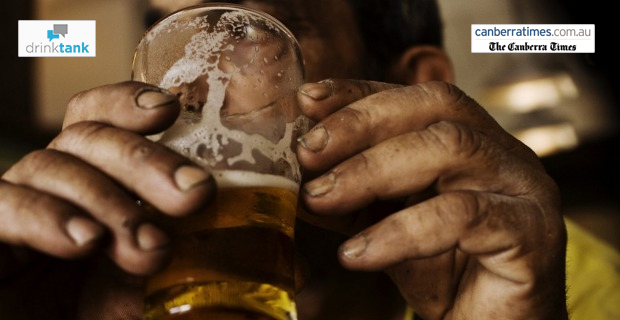It’s a sad fact that most of the alcohol in Australia is drunk by a small percentage of problem drinkers.
According to a recent report of the Foundation for Alcohol Research and Education (FARE), a fifth of all Australian drinkers consume three-quarters of the grog. The heaviest-drinking five per cent – about one million Australians – consume more than eight standard drinks of alcohol every day, and the proportion of alcohol being consumed by heavy drinkers is increasing.
The alcohol industry has known for a long time that consumption is very uneven but has been loathe to have this pointed out. This is because the super-consumers of alcohol are the industry’s economic lifeblood. Without them, that industry would earn just a fraction of the massive profits it enjoys today.
[vimeo id=”154001266″]
In contrast, the liquor industry prefers to emphasise that most drinkers at any specific time do not have a drinking problem.
This perspective is misleading for several reasons. If we look at drinkers over a period of years, a much higher proportion will have had a serious health, social or financial alcohol problem at some stage. The proportion of drinkers who have had a serious problem increases the longer they are studied. About one in every eight male drinkers and about one in 12 female drinkers will develop a serious problem with alcohol in ten to 15 years. Some studies report even higher figures. Also, some of the problems from alcohol are not primarily experienced by the drinker but by their family, friends or even complete strangers.
Another way the industry’s spin misleads is that most alcohol problems experienced in the community are actually accounted for by the people who only drink moderately heavily over the course of a year, compared to the much smaller number of super consumers.
In the same way, a small number of motorcyclists ride at much higher risk of death or serious injury than the large army of car drivers. But it’s the car drivers who still account for the vast majority of road crash deaths because there are so many more car drivers than motorcyclists.
Many people who drink moderately heavily over the course of a year consume spectacular quantities in short bursts and this is often when their problems arise. About half the problems we associate with alcohol are caused by heavy binges, while the other half are caused by continuous, relentless drinking.
Like the tobacco industry, the liquor industry knows it is selling an addictive product. Each year in Australia, alcohol causes between 5,000 and 6,000 deaths and directly results in more than 150,000 hospital admissions. In 2004-05, alcohol cost the Australian economy an estimated $15 billion.
Every year, millions of Australians have a negative experience from someone else’s drinking in the form of physical, sexual or verbal abuse. Moreover, alcohol is almost certainly the most important factor fuelling domestic violence.
When the industry exhorts us to “drink responsibly”, it knows this is an empty and cynical admonition. The industry opposes strenuously every attempt to encourage us to effectively moderate our drinking, such as price increases or availability restrictions. The industry loses few of these battles; it is immensely powerful. Few politicians dare to stand up to it.
There are many parallels between the alcohol and gambling industries. Both rely for most of their profits on a small minority of super-consumers, both are responsible for huge health, social and economic costs to the community, and both win almost every political fight they enter. Many psychiatrists consider that, for a certain percentage of the population, gambling is just as addicting as alcohol.
Tobacco has some important differences from alcohol and gambling. Most smokers consume close to the average number of cigarettes. Tobacco has few super consumers. Between half to two-thirds of all smokers will die from a tobacco related illness. The tobacco industry makes its huge profits from the large number of smokers, almost all of them addicted. But unlike alcohol and gambling, in recent years the tobacco industry has lost almost every battle it has fought. Many people who drink alcohol at high risk, also gamble and smoke heavily and many of this group will die a tobacco related death.
The junk food industry sells food that is either too sweet or too salty for our own good. Like the alcohol and gambling industry, the junk food industry is extremely profitable and also loses few political battles. Hence many Australians are now obese and that proportion is increasing.
Expecting all individuals to be responsible for their own wellbeing is a reasonable proposition but if this is the only consideration, then we will live in communities with terrifying rates of problems with alcohol, gambling, obesity and smoking.
Achieving a reasonable balance between individual responsibility and protecting citizens from harm is getting more difficult. But we must try harder.








Add comment